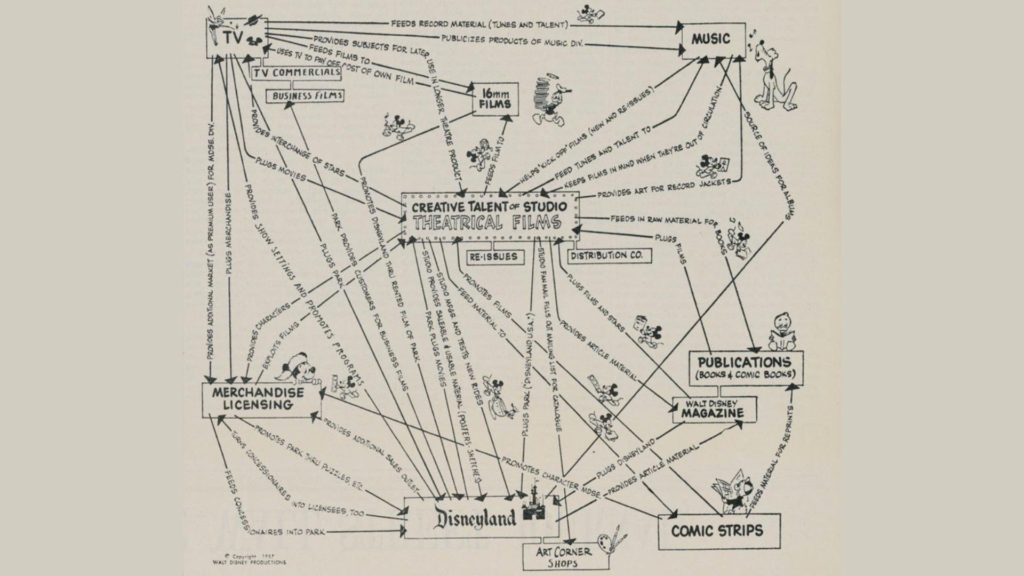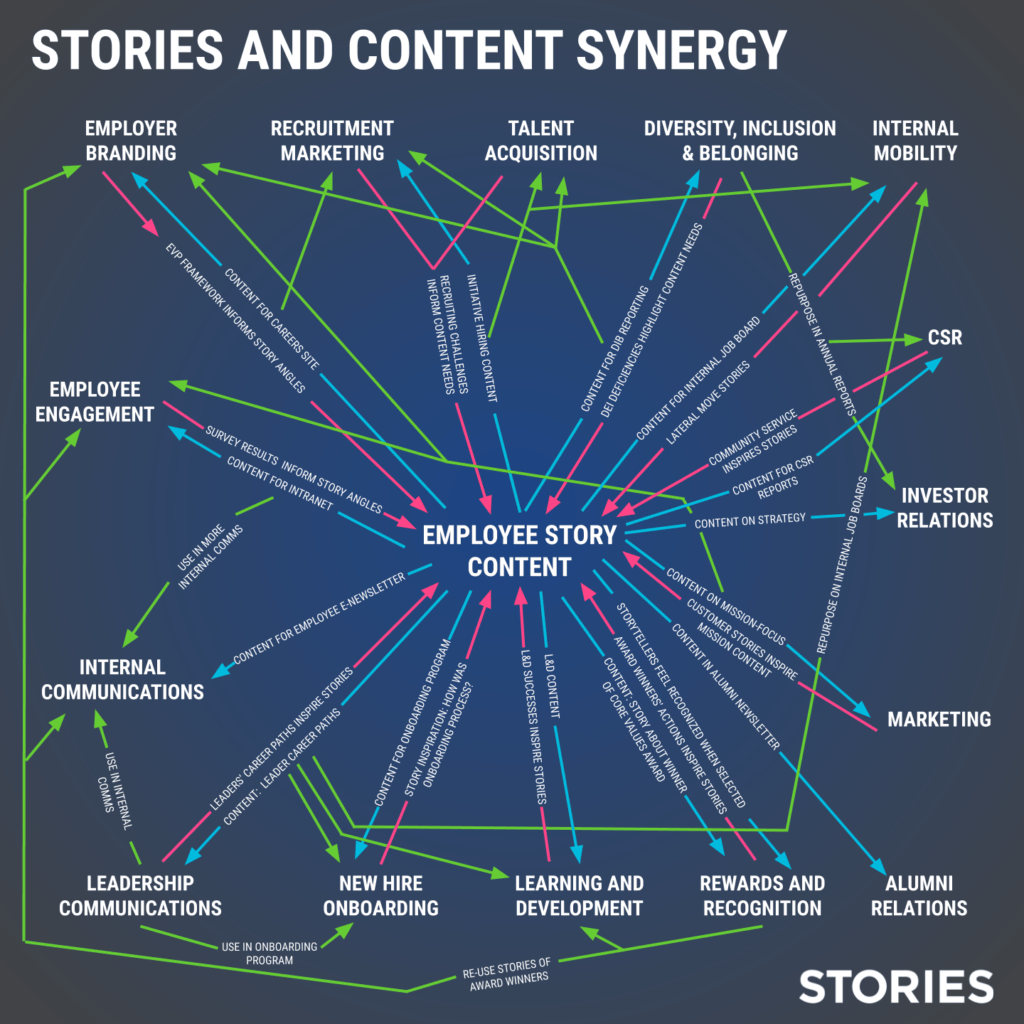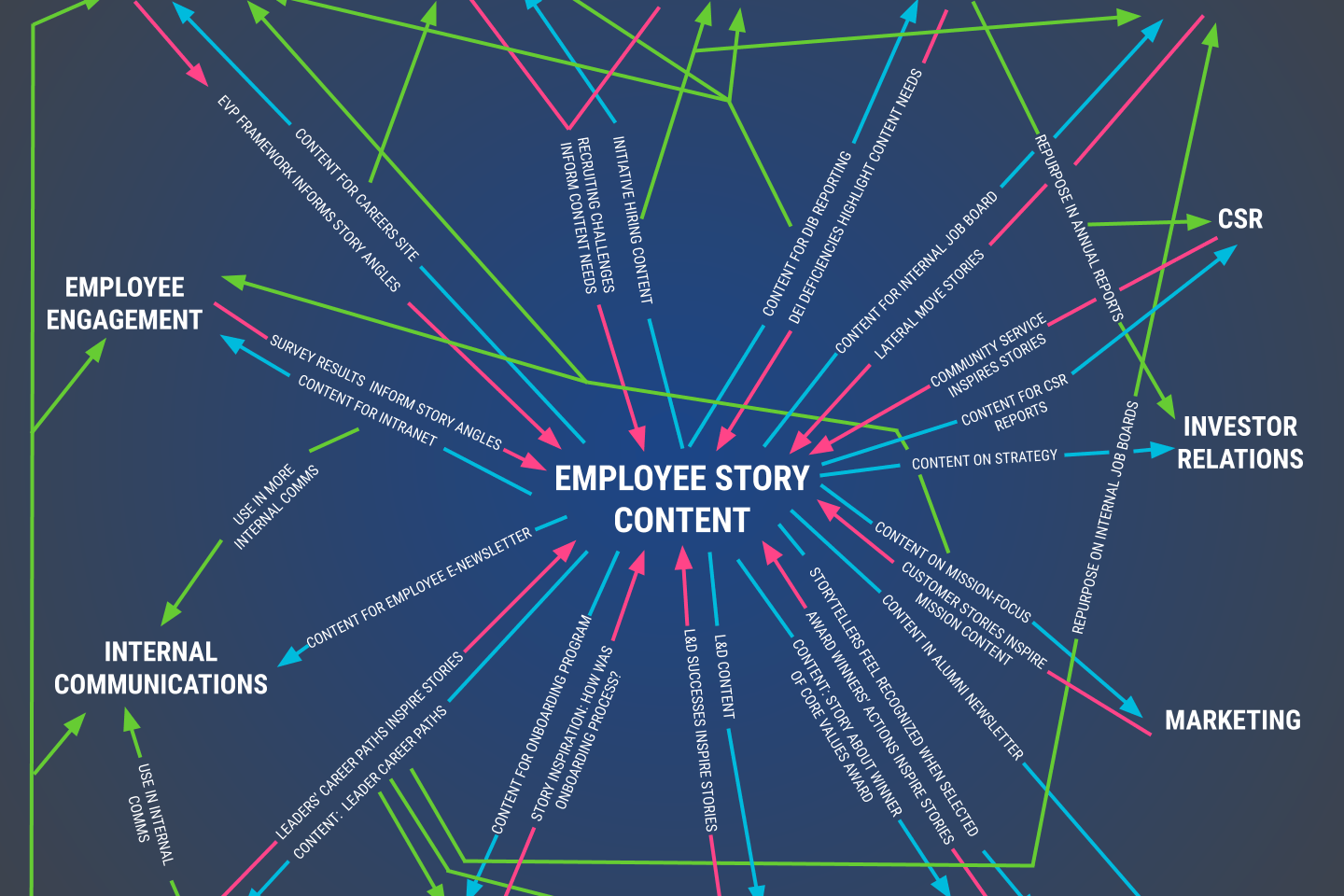What Disney can teach us about content and organizations
In this post, I take inspiration from a 1957 sketch by Walt Disney. This sketch illustrates what Disney can teach us about how content should work within an organization.
I came across this Walt Disney sketch from 1957:

I thought it was a really cool way to illustrate the company’s “synergies.” (Pardon the cringe-worthy corporate jargon, but I hope you’d agree that the synergies are very real in this sketch.)
As I thought about it more, I realized that it’s very applicable to how we at Stories Inc. view the role of stories and content within organizations.
Disney’s content studio sits at the center of everything
Looking at Disney’s sketch, it immediately becomes apparent that the “Creative Talent of Studio / Theatrical Films” is the beating heart of the company. The studio is the creative factory, sending content of all types to all parts of organization.
Obviously, that content includes the production of the movies themselves. However, there’s also the development of the movie characters for use by the merchandising and licensing department. There’s the design work on posters that go up in Disneyland, artwork for record jackets (back then), comic strips, articles written for the magazine, and more.
While so much content goes out from the studio to the various business units, it’s not a one-way street. Disneyland and the various publications promote the theatrical films. Additionally, Disney music keeps the films top of mind when there’s not currently a movie in theaters. Also, the TV department provides subject ideas for future films.
Stories should sit at the heart of companies
At Stories Inc., we believe that stories have the power to play a similarly central role in all organizations. We see that that’s true, even if content isn’t also a company’s product, like at Disney. Content based on stories (whether they’re employee stories or customer stories) can be repurposed in so many ways. The needs of one part of the company can inform and inspire stories that end up being useful to other departments.
Here’s a quick (and incomplete) version of what that looks like. I’ve used Disney’s sketch as inspiration for my own infographic.

Repurposing content across an organization
We’re constantly thinking about the various ways that story content can be repurposed, so the outward-pointing arrows came easily. For example, we’re fortunate to be able to work with the mighty employer brand team at Dell Technologies, for whom we’ve created hundreds of pieces of content based on employee experiences.
The Dell Technologies employer brand team shares their new content through the many channels that the team owns. However, they didn’t hoard it, keeping it all to themselves. They knew that other teams would find the content useful. Soon, the content made its way into different channels owned by the Marketing team and Social Impact team, including Dell’s Progress Made Real Annual Report.
Sourcing story inspiration from around the organization
Prior to sketching out our version of the diagram, I had never explicitly thought about the inward-pointing arrows. Disney’s sketch shows us a two-way street between business units and the studio, so what would the inbound direction of that two-way street be in the Stories version of the sketch?
I realized that the inward-pointing arrows represent the different departments’ (or business units’) insights, challenges, or needs—all of which can inspire or inform the creation of story content.
For example, maybe an employer brand team invests in the development of an Employee Value Proposition (EVP). The new EVP creates both a need for story content (to support the EVP), but also a direction or framework for what that story content should touch upon. With the new EVP in hand, the content team knows exactly what types of stories to uncover to drive content creation.
Once it’s created, those stories content can be sent back to the employer brand team to support the new EVP. But it can also be used by other departments in the company. Meanwhile, the employer brand team can benefit from content inspired by the insights, challenges, and needs of the other departments.
What Disney can teach us about content flow and brand
The Disney sketch and the Stories version are not perfect parallels. For one thing, the content that the Disney studio puts out is also the company’s main product. Whereas the content in our diagram supports the company’s customer-facing brand and employer brand. Also, the Disney sketch shows the synergies between business units, whereas our version shows the synergies between departments in the organization.
Despite the differences in the diagrams, the main idea stands:
Story content can and should circulate throughout your organization, and therefore, the creation of your stories-based content should play a central role.

